




““The goal of early childhood education should be to activate the child’s own natural desire to learn.””
-Maria Montessori
Oak Farm Montessori School’s carefully planned Primary environments have been created using Montessori principles. These environments support the student’s natural desire to learn by embedding an academic atmosphere in a well-ordered social community. Order, concentration, coordination, and independence are nurtured through the use of Montessori materials. These materials also build a foundation for math, writing, reading, and cultural subjects such as geography, the sciences, history, art, and music. In the classroom each child is honored as an individual learner, maximizing their potential. The teacher has an in-depth relationship with each student based on respect, warmth, patience, and understanding.
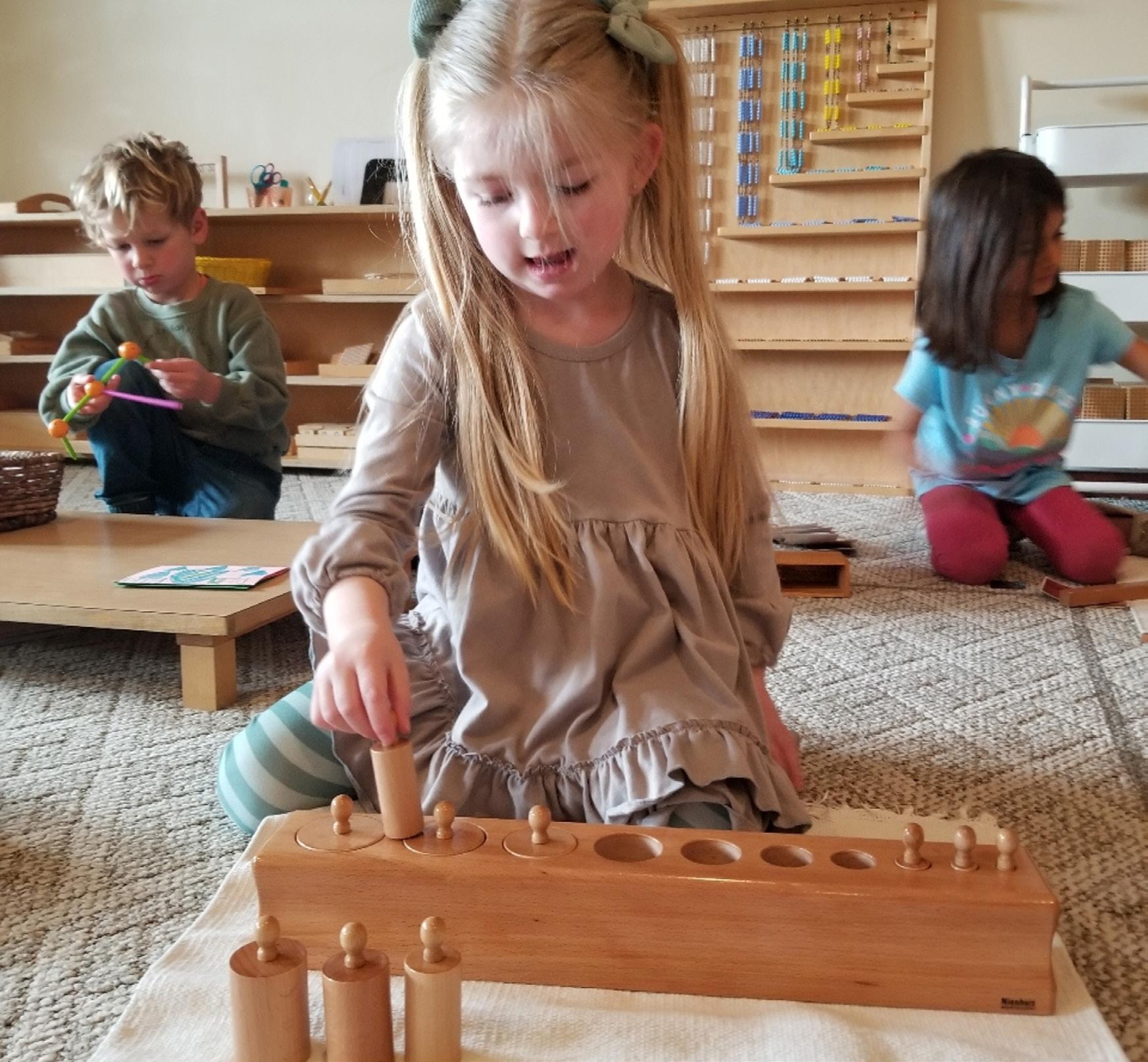

1. Intellectual: The mind’s power of reasoning and acquiring knowledge
The Primary classroom’s work and environment support the discovery and application of knowledge. Progression is from the known to the unknown, from the simple to complex, and from the concrete to the abstract. Students develop detail in work and creativity and begin academic learning. They achieve understanding and capability in the application of process, sequence, and order.
2. Emotional: The mental or physical awareness, not wholly based on reason, which allows identification with feelings
The Primary classroom’s work and social environment encourage the development of both self-respect and self-confidence, which leads to self-realization. Strong emotional health that includes the ability to empathize and sympathize with others is nurtured. This health includes learning to name and express emotions appropriately, self regulating, and making ammends.
3. Social: The interaction with others as well as with the environment
The Primary classroom’s work and environment allow students to know, practice, and respect their role at school. Students learn to be responsible for their environment and contribute to their community. This includes the practice of being gracious and courteous and the giving and receiving of respect.
4. Physical: The body and its movement
The Primary classroom’s work and environment give purposeful direction to a child’s natural need for movement. Both gross and fine-motor development are refined over the three years.
5. Spiritual: The mind as distinct from body; morality.

The Primary classroom’s work and environment allow students to develop intrinsic motivation that leads to inner discipline and a unity among thought, will, and action. Students develop a love and respect for their work and a connection to their environment as well as to those who share it. This leads to cooperation rather than competition and to peace rather than violence.
The Primary program is typically a threeyear program but can sometimes be a four-year program, with the final year being the equivalent of the Kindergarten year. It is the year children blossom into confident leaders, mastering the knowledge they have already gained. It is also the year they make the transition into a new level of academic ability. It is important that they be allowed this transition in a familiar environment and with a teacher who knows them well and can provide continuity and direction, so they emerge confident, prepared, and eager for the next plane of development.
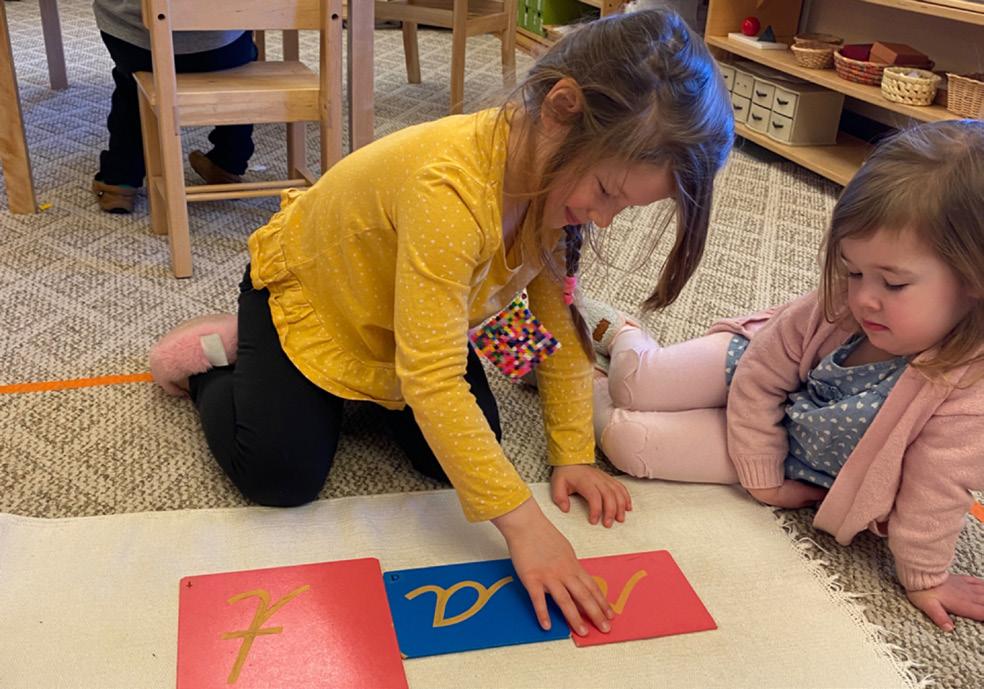
Classroom works and materials are in sequential order within the five curricular areas listed below from left to right, top to bottom, gross to fine, simple to complex, and concrete to abstract. Students receive lessons, practice and progress through the works when readiness is demonstrated.
1.Practical Life: The Practical Life materials are designed to aid the student in developing necessary practical living skills including care of self, care of the environment, and socially acceptable behaviors, including grace and courtesy. In addition, the Practical Life works aid the child in developing skills that meet his/ her natural need for order, concentration, coordination, and independence. These skills improve every time the child chooses the materials and are “carried over” to other classroom areas as well as to other areas of the child’s life and education such as a love for work, a love for learning, and a desire for self-growth. The materials also aid in the teaching of A Cycle of Activity, which includes: 1. beginning––choosing a work from a shelf, 2. middle––doing the work, and 3. end––returning the work to the shelf, ready for the next student.
2.Sensorial: Along with teaching order, concentration, coordination, and independence, the Sensorial materials are designed to teach discrimination of the senses as well as discrimination of geometric form. These materials increase the child’s sensitivity to their senses as
well as the child’s discriminating and differentiating skills that lead to abstract thinking. The materials make a child aware of their unconscious impressions and bring those impressions into conscious awareness. They allow the child to create a basis of order in their mind and allow intelligent exploration of the environment. The child’s motor coordination improves and, as the senses become refined, the child can gather more reliable and accurate information that allows for the awareness of beauty and enhanced artistic creativity. In addition, the materials aid the child in becoming more articulate, more analytical, and more prepared for intellectual activities.
3.Math: The Math materials are designed to develop the child’s logical mind. They represent the abstract concepts of numeration, place value, addition, multiplication, subtraction, division, and algebra concretely. This allows the child to have a concrete foundation of mathematical concepts.
4.Language Arts: The Language Arts materials are designed to teach effective use of language skills. The children work with materials that will aid them in developing their recognition, vocabulary, speech, listening, conversation, prewriting, writing, pre-reading, reading, and research skills. A phonetic approach to reading is used, and cursive writing is taught. Letter formation, placement, and spacing lessons are usually taught to the older Primary student, while younger students are introduced to prewriting works, letter sounds, and an environment rich with letters and words. To support your child’s reading development, please note that children need first to be introduced to a letter’s sound rather than its name and first to lowercase letters rather than capital letters for writing and reading success. While writing with and for your child, we recommend using lowercase letters such as c-a-t, as opposed to C-A-T. In addition, please use capital letters only for proper nouns such as Janet, as opposed to JANET.
5. The Cultural Subjects: The Cultural Subjects are designed to teach the child geography, history, and science. They aid the child’s understanding of our solar system, what makes up our earth, and our place and responsibilities on the earth. These subjects give them an appreciation of the different people, cultures, plants, and animals that live on our earth.
Additional Areas
Outdoor work and Brain Gym are work choices guided by Specialists out of the classroom environment. Art and Music are guided by the classroom teacher within the classroom. In addition, Music, Spanish, Ecoliteracy, Library, and Art are taught by a Related Arts Teacher. A Spanish teacher offers Spanish lessons to all children in the classroom on a regular basis. Kinderforest takes place at least once per month for the morning work cycle with possible extensions. The Kinderforest movement is a response to the decline of children’s access to and engagement with natural spaces. It is an attempt to reestablish a healthy balance of indoors and outdoors in children’s lives.
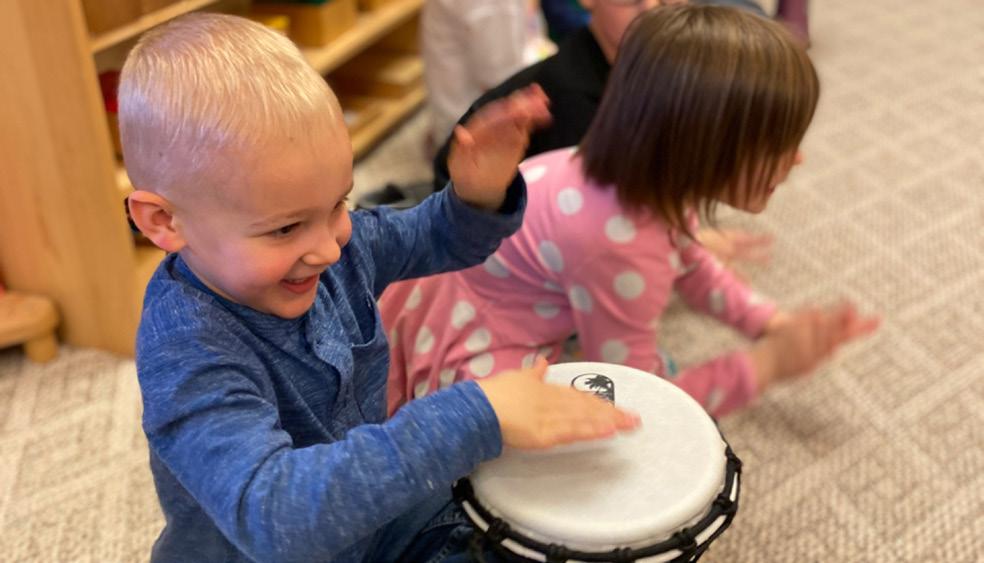
The Primary classes meet five days per week. There is a half day option (8:45 am to 11:45 am) and a full day option (8:45 am to 3:15 pm). Students arriving prior to 8:25 am or dismissing after 3:30 pm are to be enrolled in the before care and/or after
care program. Please refer to the Oak Farm Montessori tuition and fee schedule for details on hours offered.
*All first and second year students will have a rest period during the afternoon work cycle to nap, self calm and/ or practice mindfulness.
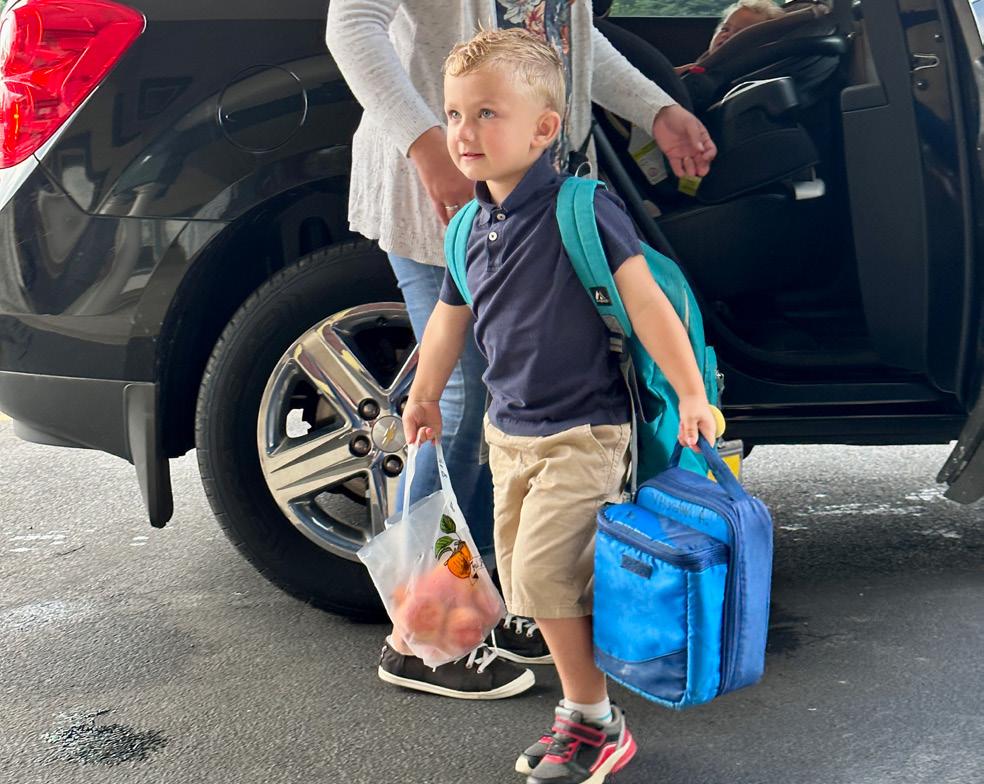
Students are to arrive at School no earlier than 8:25 am and no later than 8:45 am. A faculty member will greet Primary students at their car between 8:25 am and 8:45 am. Drive your vehicle to the main entrance and stop in one of the four designated spots, passenger door facing the sidewalk, and wait for a faculty member to open the car door and greet your child. Please do not exit your car or bypass other vehicles while in carline. Have your child ready with shoes, coat, lunch box, and backpack when greeted by faculty. Remember that food, blankets, toys, and stuffed animals need to stay in the car. Once your child exits the car and is safely away from vehicles, proceed through the circular drive and exit.
For families with students enrolled in various levels and buildings at Oak Farm Montessori, please follow the arrival order found in the parent handbook.
Students are to arrive at school no earlier than 7:30 am, and parents are to arrive for students no later than 5:00 pm. However, all parents are accountable to the arrival and dismissal times stated on their Enrollment form. Should the stated time need to change, please contact the school.
Before and After Care is held in the Victorian Farmhouse Multi Purpose Room, adjacent to the library.
Arrival: When you drop off your child for Before Care, please park your car in the parking lot of the Victorian Farmhouse. Walk your child to the main entrance and enter the four-digit PIN that was previously provided to you to unlock the door Remember to press the # button after entering your PIN. Please be sure that a teacher is aware that your child is now in attendance.
Dismissal: When you pick up your child from After Care, please park your car in the parking lot of the Victorian Farmhouse Walk to the main entrance and enter the four-digit PIN that was previously provided to you to unlock the door Remember to press the # button after entering your PIN. Please sign your child out and wait quietly in the hallway for your child to finish their work.
Please note that if your child arrives between 8:25 am and 8:45 am or dismisses between 3:15 pm and 3:30 pm, you are to follow the procedures stated under “Arrival and Dismissal for Students NOT Enrolled in Before Care or After Care.” Please inform the school of any changes to your child’s arrival and dismissal times.
For the Safety and Security of all, we ask that you:
•Model patience for your child during arrival and dismissal, as your child is not yet ready to understand or participate in hurried behavior. Patient behavior will give your child much calmer beginnings and endings to their day.
•Faculty members will not participate in meetings during carline arrival or dismissal. We will use the procedures written under “Communication.” However, notes and other correspondence may be passed at this time.
•Inform substitute drivers of all arrival and dismissal procedures.
• Follow the car line guidelines outlined in the Parent Handbook.
Note: A faculty member will note the person picking up your child. If the person is not on the approved pickup list, that person will be asked to park their car and go to the appropriate administrative office to have their identity verified prior to allowing the student to leave with that person. A picture I.D. will be required. In addition, if the person picking up your child is on the transportation form, it is still necessary for parents to notify the teacher or School regarding a change in pick-up person.
We appreciate your patience during the busy arrival and dismissal times.
•Parents are to arrive at School to pick up students no earlier than 11:45 am and no later than 12:00 noon for half day, and no earlier than 3:15 pm or later than 3:30 pm for full day.
•A faculty member and your child will greet you at your car. Drive your vehicle to the main entrance and stop in one of the four designated spots, passenger door facing the sidewalk, and await the faculty member and your child to greet you at your car’s right rear door. Please do not exit your car at this point. The faculty member will open the car door. Faculty members will not secure students in their seats. Once your child is seated and the door is closed, please pull into the first available parking spot. Please, DO NOT park in the designated no parking zones. After pulling forward, since many Primary students may not yet possess the needed motor skills to secure their own seat belts, you may exit your car to secure your child in his/her seat. Once your child is secured, proceed through the circular drive and exit.
• If it is necessary for you to visit the office at dismissal time, please park your car in the Green Farmhouse parking lot before you follow the above dismissal procedure. •Please share these procedures with everyone on our approved pick up list.
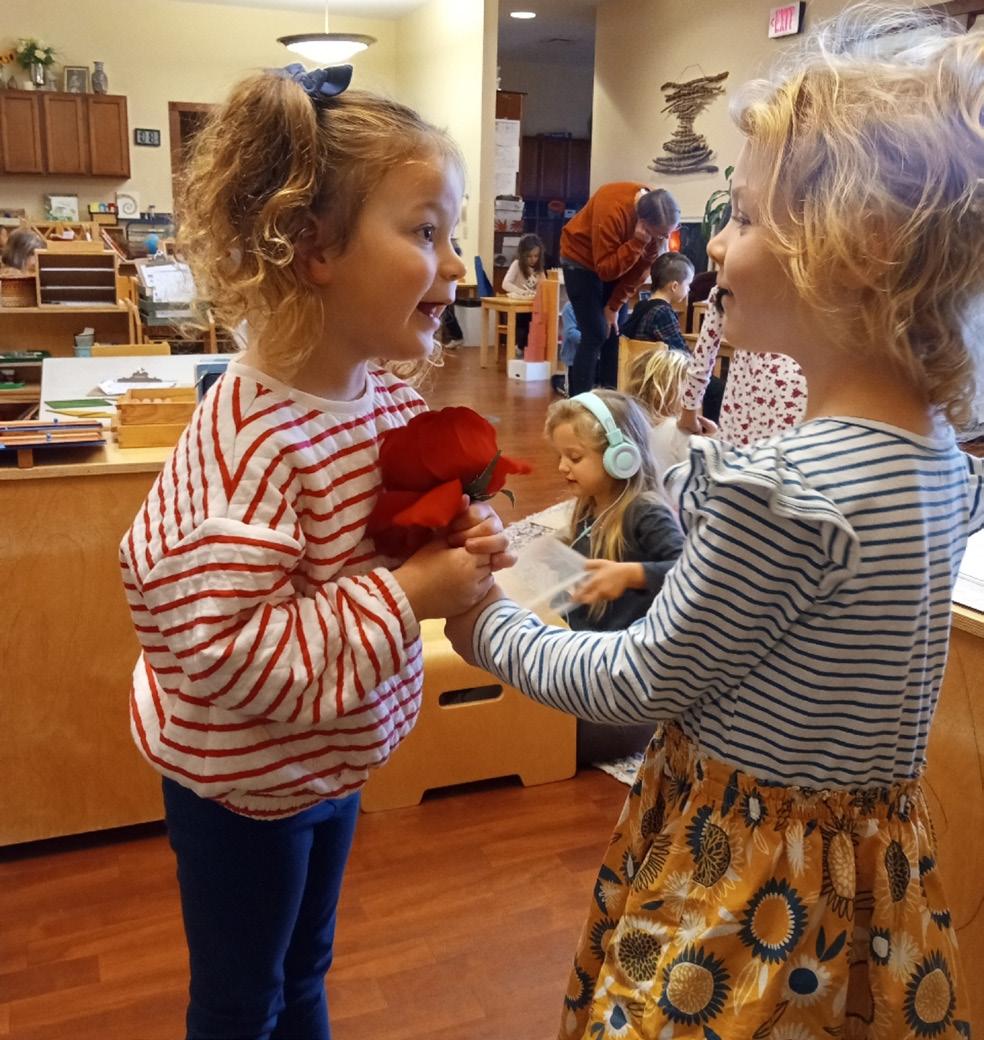
With the teacher’s approval, students may bring in special items to share occasionally such as appropriate books, natural science items, pictures, and newsworthy articles from newspapers and magazines. Please do not bring toys of any kind, including keychains on their backpacks. Personal belongings such as money, accessories, balls, lipstick, cosmetics, toy cars, and dolls disrupt and can sometimes “disappear” and may not be brought to school.
Primary students are expected to be independently toileting and to wear underwear to school. Should your child have a toileting accident, they are given a lesson on caring for themselves. Please follow through with this lesson specifically wiping independently at home. In addition, parents are recommended not to put pull-ups on their child during the day or night. Pull-ups can inhibit toilet training; it may be better for your child to experience the discomfort of the accident and the subsequent care that is required. This care includes removing soiled clothing, cleaning, and dressing themself.
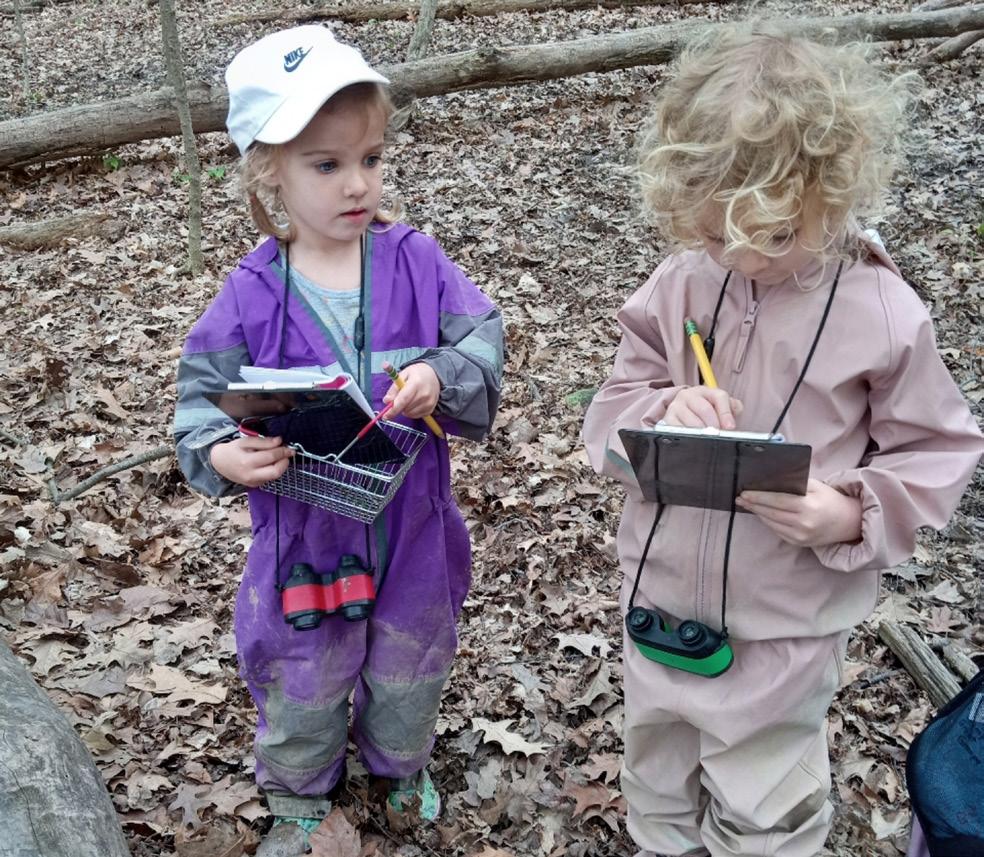
Please send your child to school in weather appropriate shoes and clothing with which your child can be independently successful. The goal is for children to dress and undress themselves. Children who are not ready to tie shoes are to wear shoes they can slip on and off. All shoes need to be closed-toed. Sandals are not appropriate for the playground. Children who cannot yet snap or buckle should wear elastic-waist pants and no belt so that they can be independent in changing clothes. Students receive lessons in tying, buckling, and many other dressing skills, when they are ready. When your child chooses clothing for the day, please keep in mind weather and school activities. Weather and temperatures may change throughout the day and although aprons are worn for both art and water works, students do, on occasion, “wear their work.”
Adornments or decals (such as characters, cartoons, etc.) are strongly discouraged on all clothing, slippers, shoes, or lunch boxes, as they often pose distractions to children. In addition, jewelry, tattoos, stickers, or stamps typically pose distractions and are strongly discouraged. Students will be asked to remove said items should they negatively impact the learning environment. All clothing your child wears to School should be labeled, as students may need to change.
Please check your child’s backpack nightly, as it is used to transport papers in their folder, as well as dirty clothing, and lunch boxes. Create a special place near your home’s entrance/exit for your child to hang their backpack. Hanging it can be the first thing your child does upon arriving at home, and retrieving it can be the last thing they do upon leaving in the morning.
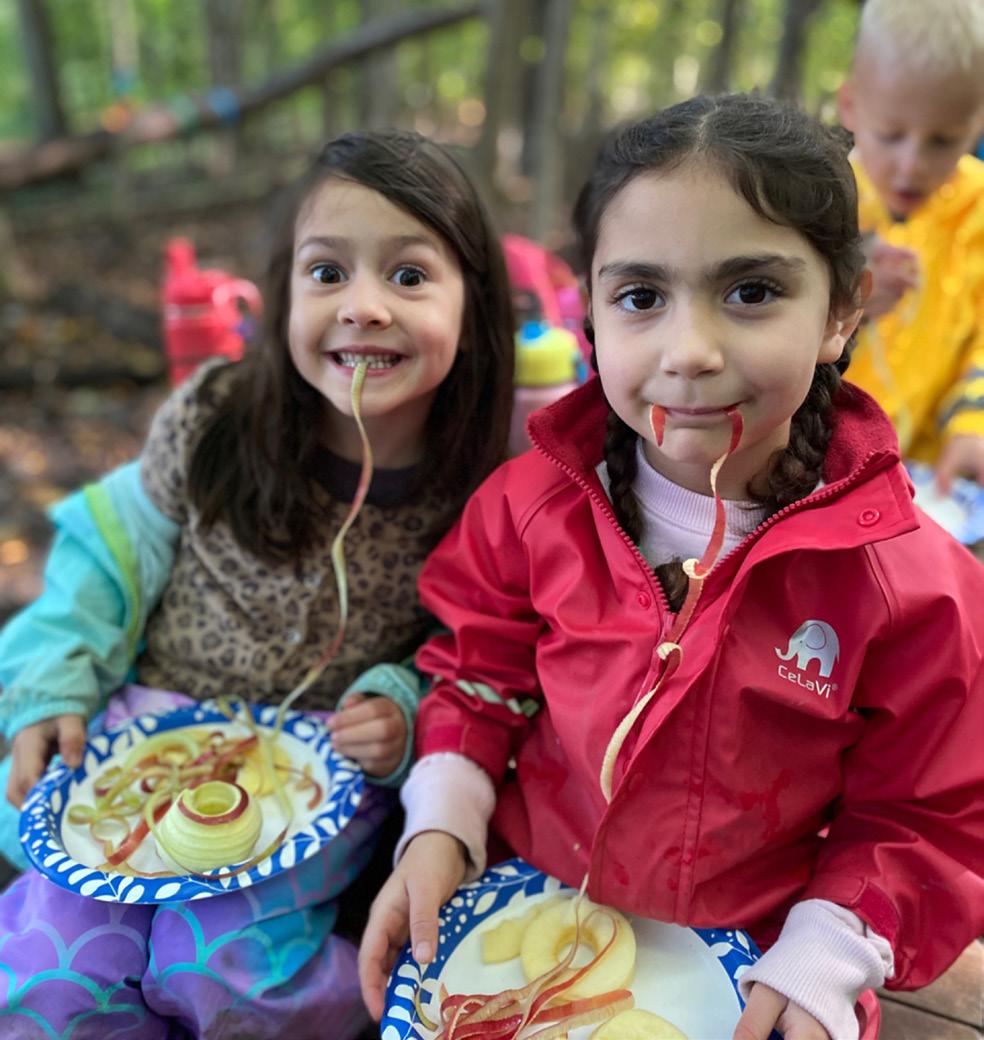
You may elect not to participate in the school’s lunch program. For those days, parents are to provide a well-balanced lunch. Our ability to heat lunches is extremely limited. Please keep items that need to be heated to a 1 minute limit.
Oak Farm Montessori School is a low-sugar school. We encourage families to turn to whole foods—organic and locally grown whenever possible—as the staples for your child’s nutritional needs. Remember that high sugared foods with labels containing more than the recommended 12 grams of added sugar are not allowed and will be sent home. Also, candy, cookies, cupcakes, fast foods (with the exception of Subway), or soda can NOT be included in lunches or snacks.
Please be mindful of healthy nutrition when packing your child’s lunch. If your child wishes to bring soup regularly to school for lunch, it should be brought in a thermos, since warm-ups are limited.
Student-packed lunches are to be packed in a lunch box with your child’s full name written clearly and permanently on the top of the lunch box. Paper bags, plastic bags, and large, igloo-type lunch boxes may not be used. Please include an ice pack in the lunch box because ample refrigeration is not available.
Please feel welcome to donate a snack to your child’s classroom at any time. Items donated may be crackers, fresh fruit, and fresh vegetables. The students serve themselves water with snack. Please check with your child’s teacher for classroom food allergies.
Full-day students practice table manners and etiquette at lunch. Students set the tables, using cloth napkins, glass dishes, and silverware. We sit at the table and converse at mealtime. Students remain at the table until they are finished with their meal. Students clean up afterwards, including loading the dishwasher, washing dishes, and doing the laundry.
The School provides water, condiments, tableware, and napkins for the students at lunch.
Parents are welcome to enjoy lunch with their child at school once a year. Please call your child’s teacher ahead of time to schedule a lunch date. These will be scheduled after Fall parent teacher conferences.
There are a few events or day trips this year when a lunch need not be purchased or packed. We will let you know prior to these days.
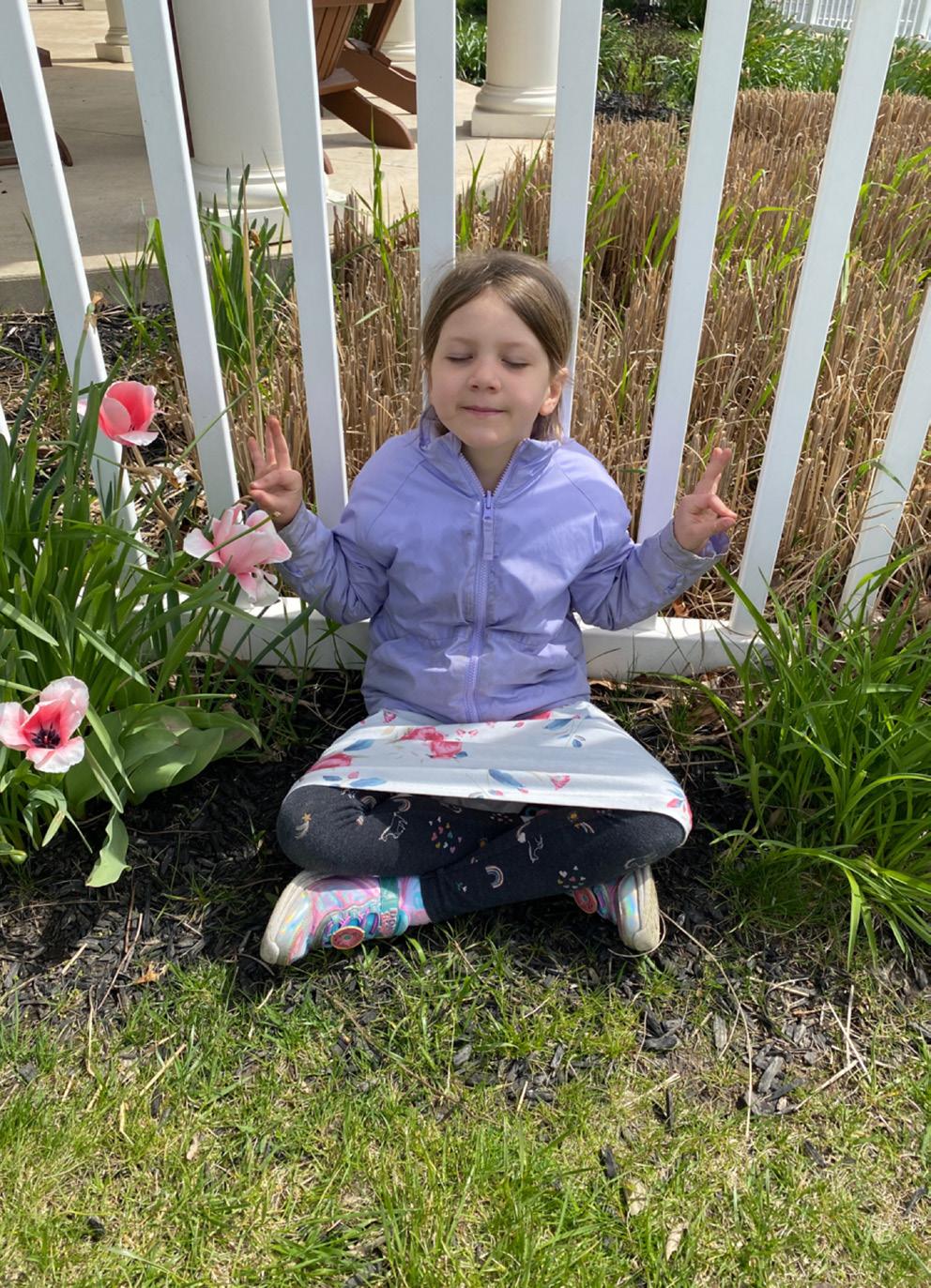
Open and continual communication between parents and teachers is very important. Please address any thoughts, comments, or questions directly to your child’s teachers and we will respond within 24 hours of a school day. In addition, please refer to the Oak Farm Montessori Parent Handbook, as it is also a valuable resource in answering many questions. When you need to communicate with us, please feel welcome to call, use Transparent Classroom, or email. In addition, please communicate to us any changes in your household so we can better support your child at school. This includes, but is not limited to, a birth, death, separation, visitor, vacation, parent trips, new caretaker, job change, or move.
We kindly ask that you email classroom teachers as well as attendance@ oakfarmschool.com when your child will be absent, arriving late, or leaving early
Teachers are occupied with students and are unable to check emails throughout the day. Please call the front office with any changes after the school day starts.
Excessive use of screen time may adversely affect a child’s brain development. It is during the younger years that the brain is forming, so please be conscientious regarding both the content of and the amount of time your child partakes in these activities. For more information, please check our School’s library, www.tvturnoff. org, and www.limittv.org.
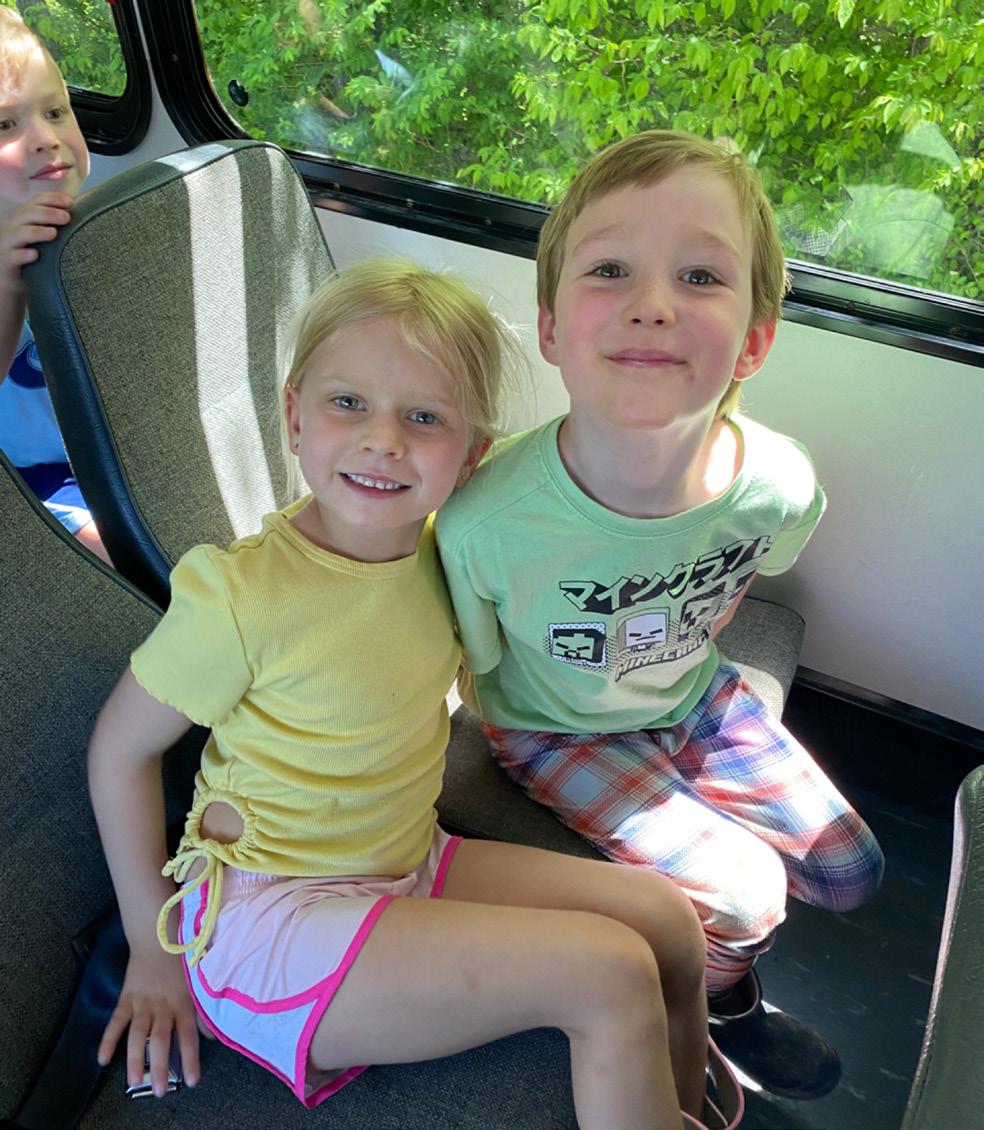
Students will enjoy field trips this year and we will send information home in advance of our trips. Each Primary classroom schedules its own trips and may or may not attend the same events. All kindergarten students will enjoy an end-of-the-year special experience to celebrate their time spent in the Primary program.
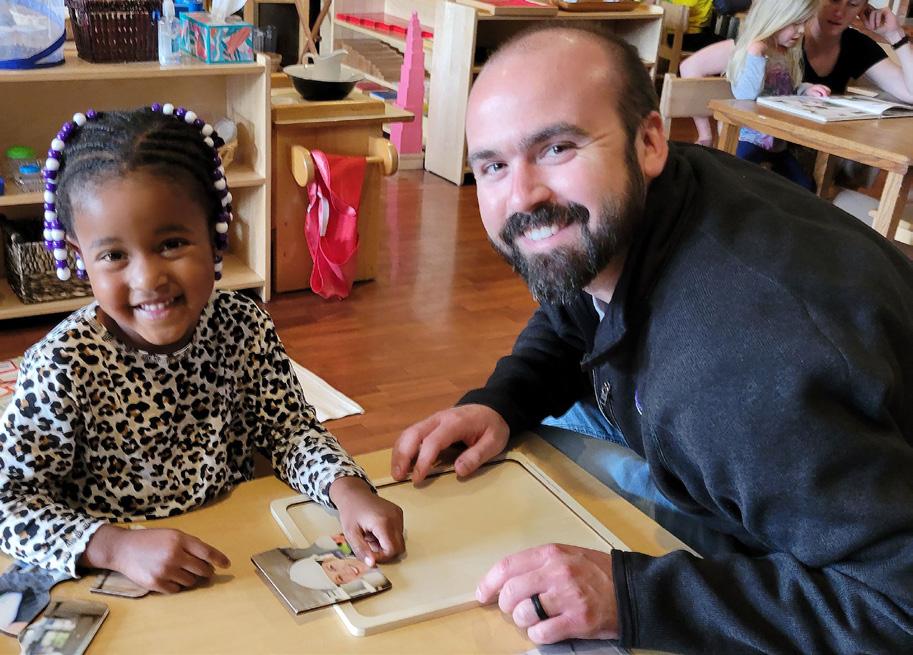
Parents are welcome and encouraged to participate in the classroom in helpful ways. We may call upon you to help with such activities as gardening, material-making, sewing, cutting, sharpening, talent-sharing, reading, and cleaning.
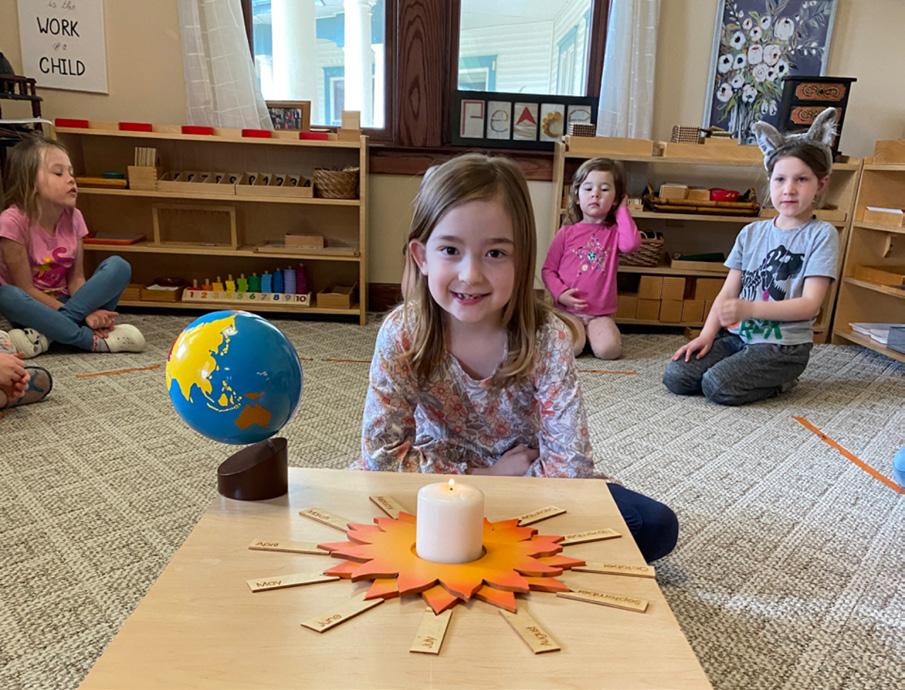
We celebrate birthdays with a special ceremony called “Walk around the Sun.” A child will carry the globe around the sun the number of times of their age. Parents are welcome to join the classroom for this celebration. Our purpose is to aid the children in understanding our earth in relationship to time.
Your child’s classroom teacher will reach out to you with more information prior to your child’s “Walk Around the Sun”. Please do not send party invitations through the School, unless the whole class is invited.

Title
The Child in the Family
The Normalized Child
Nurturing the Spirit Montessori Insights Look at the Child Our Peaceful Classroom Positive Discipline Parenting Tools
Positive Discipline A-Z
Montessori and your Child A Primer for Parents Parent Talk
The Out-of-Sync Child
Author
Maria Montessori
Kathleen H. Futrell
Aline D. Wolf
Aline D. Wolf
Aline D. Wolf
Aline D. Wolf
Jane Nelson, Mary Nelson, Brad Ainge
Jane Nelson, Lynn Lott, Stephen Glenn
Terry Malloy
Chick Moorman
Carol Kranowitz
We are all very excited about this school year. We look forward to sharing experiences, smiles, and laughter as we commit to inspiring the children to reach their potential through meaningful work.
Thank you for all you do for your child and Oak Farm Montessori School.
Primary 1


Primary 3
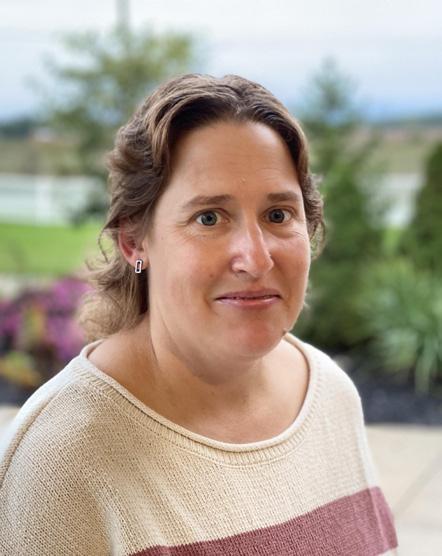

Primary 2


Primary 4

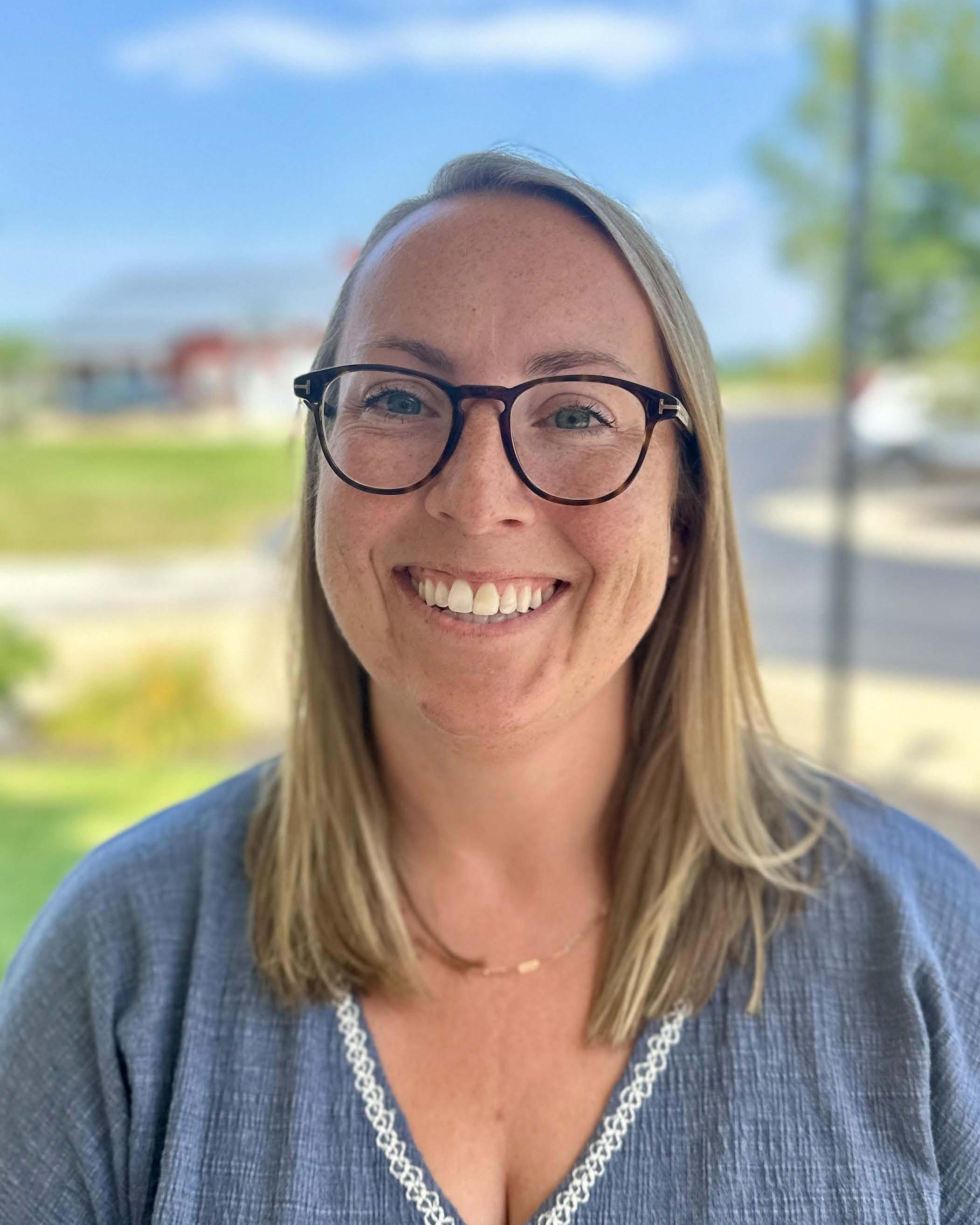
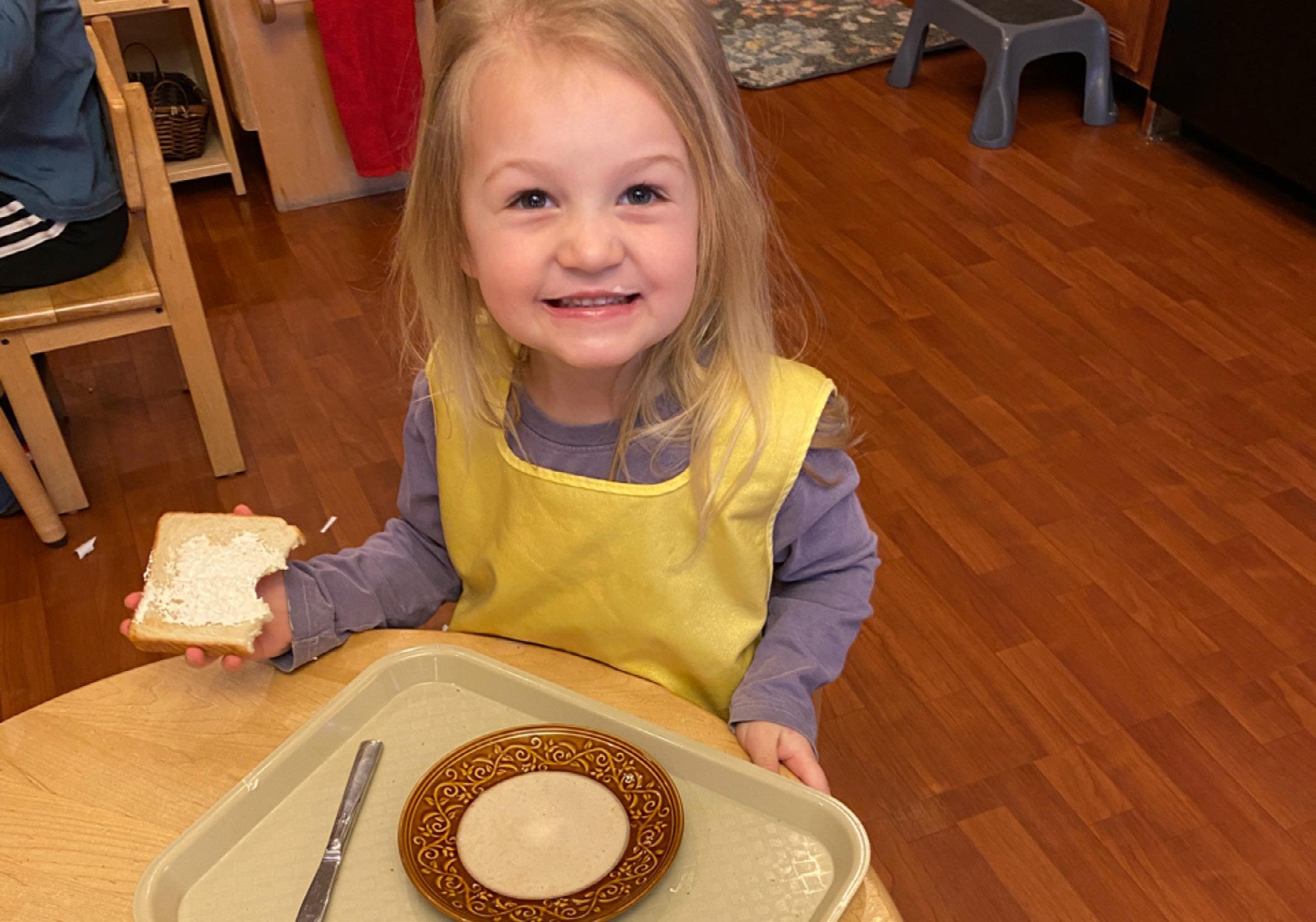


Notice of emergency closings or delays will be broadcast on the following radio and TV stations: WOWO (1190 AM Ft. Wayne), WMEE (97.3 FM Ft. Wayne) & Fort Wayne television stations 15, 21, and 33.
*Please note that there will be no before care on school delay days.
• A 1-hour delay means that students may begin arriving in their classrooms at 9:30. School will be open on 1-hour delay days for half-day students and the school lunch program will be as planned.
• A 2-hour delay means that students may begin arriving in their classrooms at 10:30. School will be closed to half-day students and the lunch program may be modified to a lunch menu that can be prepared for the normal lunch time.